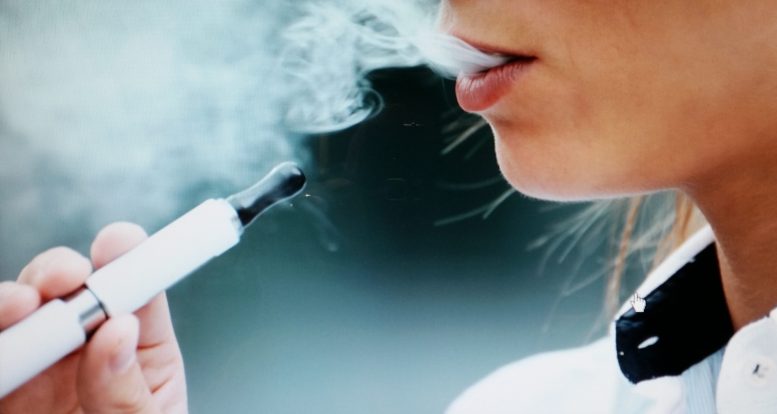By JAN LARSON McLAUGHLIN
BG Independent News
Bill Ivoska dreaded sharing such heartbreaking news on Valentine’s Day. But there was no denying the lines shooting upward on graphs.
After years of marking a steady decrease in alcohol and tobacco use among Wood County youths, the latest survey results show local students are vaping more, smoking marijuana more, plus drinking alcohol and caffeinated energy drinks more.
“I think vaping is still in a honeymoon period for kids,” Ivoska said
The surveys also noted increases in mental health issues, including bullying and suicidal ideation.
“As your mental health declines, substance abuse goes up,” Ivoska said of the correlations spotted in the surveys.
And for the first time, the surveys asked questions about gaming and gambling.
“How many of your kids are stuck on the screens?” Ivoska asked. “Could we consider gaming as the junior varsity of gambling?”
The data was gathered last October and November from adolescents in all public schools districts in Wood County. The surveys have been conducted every two years since 2004.
The 2020 survey was collected from 10,196 students in grades 5 through 12.
Ivoska explained that he discarded the surveys where students clearly were not honest in their answers. For example, those students who responded that they took all drugs, at all times, in the maximum amounts were disqualified. The surveys also listed some made-up drug names, so if students said they took those drugs, their surveys were weeded out as well.
“I look for inconsistencies,” and toss them out, Ivoska said Friday morning as he presented the survey results to members of the Wood County Prevention Coalition.

The surveys showed increased student use of caffeinated energy drinks, alcohol, vaping, marijuana and inhalants.
Decreased use was noted for cough medicine, painkillers, barbiturates, methylphenidate, cigarettes, LSD, Ecstasy, cocaine, methamphetamines and heroin.
“All of the illicit drugs have been declining,” Ivoska said.
But he worries that the other habits that are seeing an uptick may lead to more serious problems.
“We need to be targeting the gateways,” Ivoska said.
And he worries that a decade of prevention efforts focused on nicotine and marijuana use have been erased by the popularity of vaping.
Kyle Clark, prevention education program director at WCESC, stressed that despite some of the disappointing results from survey, 92% of youth in grades 5 to 12 have been drug-free in the past 30 days.
“That’s a figure I would stand up against any other county in Ohio,” Clark said. “Wood County kids are still great kids.”
Clark noted the difficulty of school districts squeezing in programming on alcohol, drug and mental health issues. “School districts have a hard time with all the academic standards,” but they make time to work on these issues as well, he said.
Following are some specifics from the survey.
Vaping:
- 27% of 12th graders vape in Wood County. That’s a 60 percent increase in the past two years.
- 22% of seniors vape nicotine. Vaping nicotine seems to have replaced or supplemented the use of cigarettes.
- 13% of seniors vaped marijuana within the past 30 days. That is a 605% increase in vaping marijuana among the seniors.
Alcohol:
- 6% increase in annual alcohol use among 12th graders. This is the first increase in eight years.
- Binge drinking increased in grades 8, 10 and 12.
- The decade-long decline in alcohol use among students appears to have bottomed out and reversed itself.
Marijuana:
- 25% of high school seniors used marijuana last year.
- Marijuana is perceived to be “less harmful” and enjoys more “peer approval” than in past years.
- The decade-long decline in marijuana use had ended, Ivoska said.
Heroin and painkillers:
- 18 school-aged kids in Wood County reported trying heroin last year.
- Heroin is the least likely drug used by local teens.
- The vast number of adolescents in Wood County escaped the national epidemic of heroin and opioid abuse.
Caffeinated energy drinks:
- 50% of seniors consume caffeinated energy drinks. That’s a 45% increase in two years.
- Caffeinated energy drinks are increasingly popular among teens, despite growing evidence of their negative health effects.
- The highest rate of use in the U.S. is among young teens.
The surveys also asked students about mental health issues. The 2020 results show an increase in teens reporting “severe” or “intense” mental health symptoms, plus a decline in teens reporting “no problems.”
Ivoska also pointed out that the survey results show a connection between mental health problems and substance abuse.
Following are some results from questions about mental health related issues.
Bullying:
- Bullying is trending upward among fifth and sixth graders – especially verbal and indirect bullying, also known as relational or social bullying which is intended to hurt victims by damaging their self-esteem or social relationships.
- Victims of bullying are more likely to exhibit health problems, have declining grades, contemplate suicide, skip school to avoid being bullied, and experience feelings of depression and low self-esteem that can persist for years.
Suicide:
- Seniors reported the highest rate of suicide ideation ever recorded in the youth surveys. But Ivoska also noted that more schools are encouraging students to talk about those types of feelings.
- Suicide attempts are trending downward.
Adverse childhood experiences:
- Students reported increases in all areas of abuse, neglect and household dysfunction. They reported increases in the number of families with mental illness, substance abuse, an incarcerated relative, parental separation or divorce, physical abuse, emotional abuse, sexual abuse, and neglect.
- As the number of adverse childhood experiences increases, so does the percentage of at-risk behaviors.
Youth gaming and gambling:
- 61% of sixth graders reported gaming every day last year. Gaming involves games played on a computer, from a gaming console, or from devices like phones or tablets.
- 38% of sixth graders spend two hours or more each day gaming.
- The highest levels of “disordered” or problem gambling was reported among 11th and 12th grade males, at 4.2% and 3.3% respectively.
The survey was funded by the Wood County Educational Service Center and the Wood County Alcohol, Drug Addiction and Mental Health Services Board.
The results are used by school officials to help with drug use prevention components of school curriculum, and to help secure grant funding.
Ivoska’s presentation on the latest survey results was made in front of school, mental health and law enforcement officials. A suggestion was made to add questions in the future on use of social media, and on involvement of students in extra-curricular and community activities.





